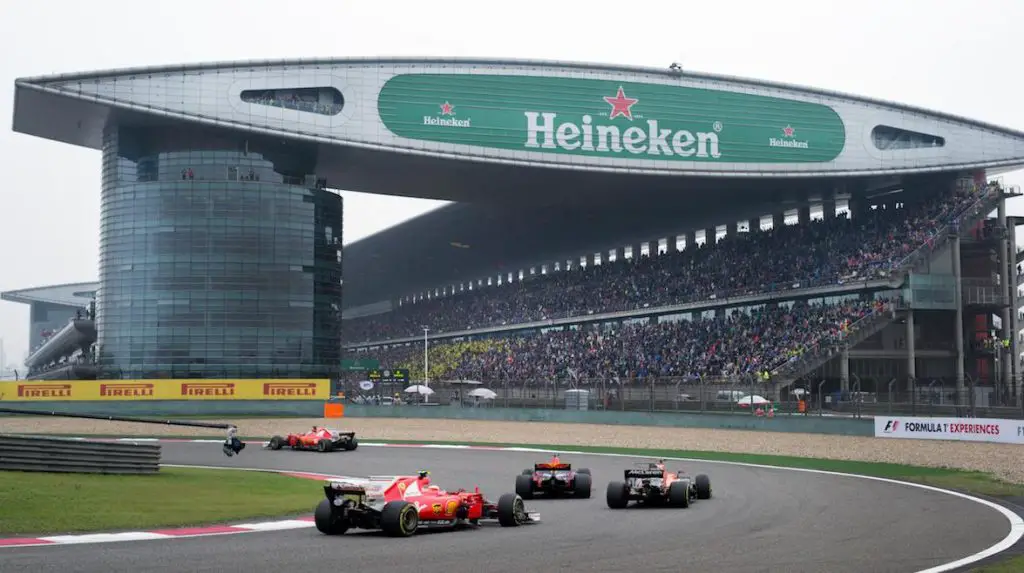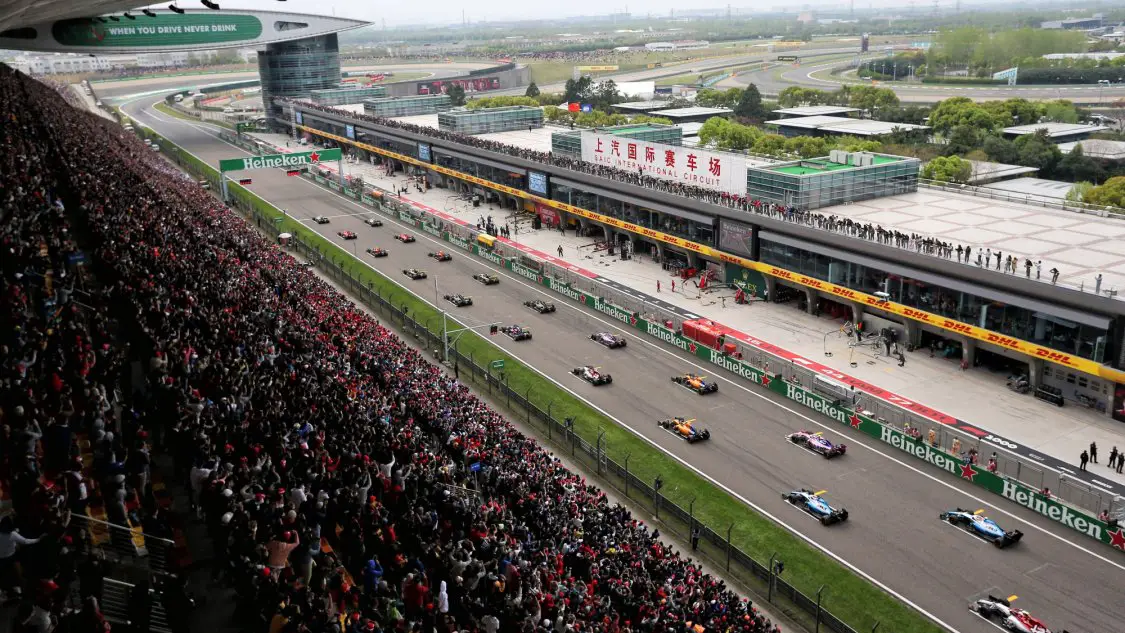The Chinese GP circuit is a thrilling combination of straights, hairpin turns, and sweeping corners that test the mettle of both man and machine. As one of the most prestigious Formula 1 races, the Chinese GP demands expert driving skills, impeccable strategy, and a deep understanding of the track.
In this article, we will take a corner-by-corner journey around the circuit, highlighting the speeds, gear selections, g-forces, braking requirements, and exit strategies at each turn. Additionally, we will delve into the typical temperatures that drivers must cope with during the Chinese GP.
The Chinese GP Track Overview
The Chinese GPP Track Overview Before we delve into the specific corners of the Shanghai GP track, let’s first gain an overview of the circuit.
The Shanghai International Circuit is a 5.451-kilometer track featuring 16 challenging corners, a blend of long straights, and a unique layout that combines high-speed sections with technical challenges.
The circuit’s design ensures a balance between speed and precision, putting drivers’ skills to the test.
Shanghai GP – Track Layout and Key Features

Chinese GP Turn 1 – The Longest Straight
Approaching Turn 1, drivers accelerate down the circuit’s longest straight at speeds exceeding 330 km/h (205 mph).
As they approach the corner, they need to decelerate and select 3rd gear to navigate this tight right-hand hairpin. Drivers experience significant g-forces as they enter the corner, with lateral forces reaching approximately 3.5 g.
Braking is crucial here to ensure a clean entry and a quick exit.
Chinese GP Turn 2 – The Double Apex
Following Turn 1, drivers quickly transition to Turn 2, a double-apex left-hand corner. With speeds of around 200 km/h (124 mph), drivers maintain 3rd gear to negotiate the complex series of curves.
They experience lateral forces of approximately 4 g, demanding precise car control. A well-executed exit sets them up for the next sequence of corners.
Chinese GP Turns 3 and 4 – Technical Challenge
Turn 3 and Turn 4 form a challenging left-right chicane. Drivers reduce their speed to approximately 140 km/h (87 mph) and downshift to 2nd gear.
The quick changes in direction require a delicate balance between speed and control. The g-forces here reach around 3 g, demanding utmost precision.
Chinese GP Turn 5 – Flat-Out Courage

Following the chicane, drivers encounter Turn 5, a high-speed, flat-out left-hand corner. With speeds exceeding 275 km/h (171 mph), they approach this corner in 5th gear.
The g-forces experienced here can exceed 4 g, pushing both the car and the driver’s endurance to the limit. A clean exit is crucial for carrying speed onto the next straight.
Chinese GP Turn 6 – A Hairpin Challenge
Turn 6 presents a hairpin right turn that tests drivers’ braking skills. They must decelerate from speeds of around 290 km/h (180 mph) to approximately 60 km/h (37 mph) in 1st gear.
The immense g-forces of nearly 5 g are experienced here, requiring immense strength and focus from the drivers. A smooth exit sets up the following section.
Chinese GP Turn 7 and 8 – S-Shaped Sequence
The S-shaped sequence of Turn 7 and Turn 8 demands precise car control.
Drivers navigate this left-right combination at speeds around 200 km/h (124 mph) in 3rd gear. The g-forces peak at approximately 3.5 g. It challenges both the driver’s skill and the car’s aerodynamic capabilities.
A well-executed exit sets the stage for the next section of the track.
Chinese GP Turn 9 and 10 – High-Speed Sweepers
Turn 9 and Turn 10 form a sequence of high-speed left-hand sweepers. Drivers maintain speeds of around 230 km/h (143 mph) in 4th gear as they negotiate this fast section.
The g-forces exerted here can reach up to 4 g, putting immense strain on the driver’s body. A smooth exit allows them to carry speed into the following straight.
Chinese GP Turn 11 – The Late Braking Point
Approaching Turn 11, drivers reach a late braking zone at speeds of approximately 310 km/h (193 mph).
They select 3rd gear and decelerate to around 130 km/h (81 mph) to negotiate this right-hand corner. The g-forces experienced during this turn can exceed 3.5 g.
A controlled exit sets up the final section of the circuit.
Chinese GP Turn 11 12 and 13 – Technical Challenge
Turn 12 and Turn 13 form a challenging left-right chicane that demands precise car control. Drivers reduce their speed to around 170 km/h (106 mph) and downshift to 3rd gear.
The quick direction changes require finesse and precision, as lateral forces can exceed 4 g.
A clean exit prepares them for the final corners.
Chinese GP Turn 14 – The Penultimate Corner
Turn 14 is a fast, sweeping left-hand corner where drivers maintain speeds of approximately 230 km/h (143 mph) in 5th gear.
The g-forces experienced here can exceed 4 g, demanding immense concentration and physical endurance.
A well-executed exit is crucial for carrying speed onto the last corner.
Chinese GP Turn 15 – The Final Challenge
Approaching the final corner, drivers enter a late braking zone at speeds around 290 km/h (180 mph).
They select 2nd gear and reduce their speed to approximately 80 km/h (50 mph) to navigate this right-hand hairpin.
The g-forces experienced during this turn can exceed 4 g. A clean exit is essential for a strong finish and prepares drivers for the start of the next lap.
The Typical Temperatures at the Shanghai GP
The Shanghai Grand Prix takes place in early spring, usually in April.
During this time, the weather in Shanghai is generally mild, with temperatures ranging between 15°C and 25°C (59°F and 77°F).
However, being located on the coast, the weather can be changeable, with occasional rain showers and cool breezes. Drivers must be prepared for varying track conditions and adapt their strategies accordingly.
Conclusion
The Shanghai Grand Prix circuit is a true test of skill, precision, and bravery for Formula 1 drivers.
Navigating its 16 corners demands a delicate balance between speed and control. From the hairpin turns to the high-speed sweepers, each corner poses unique challenges in terms of speed, gear selection, g-forces, and braking requirements.

